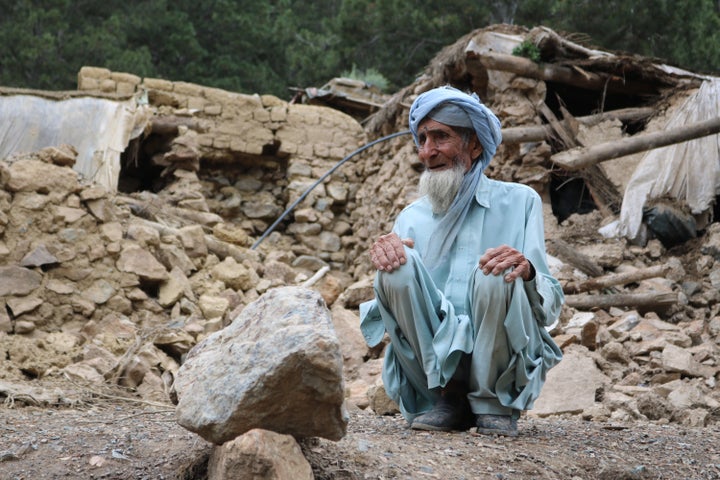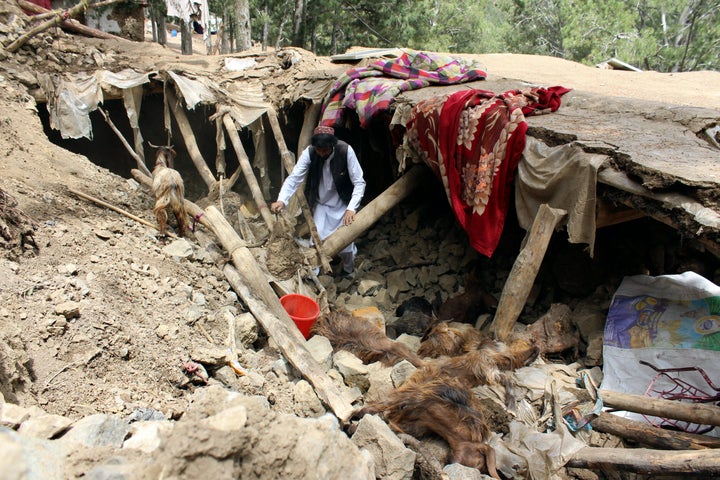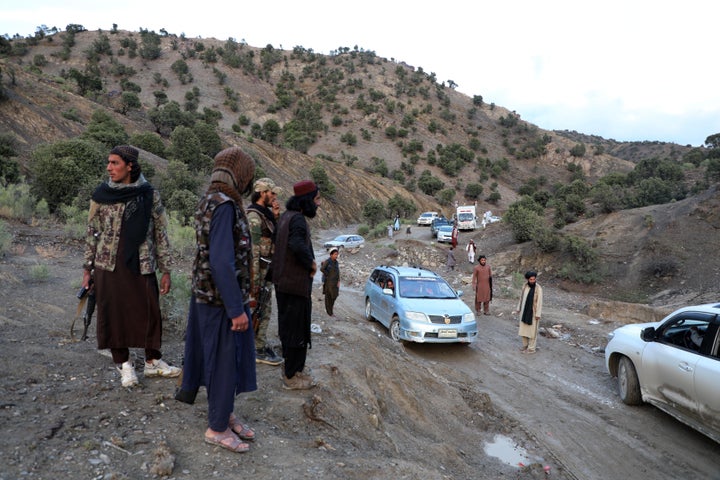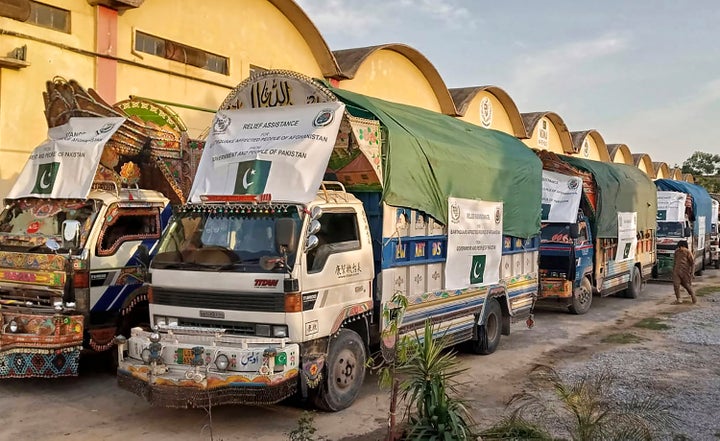
Hundreds were killed in an earthquake in the southeastern region of Afghanistan early Wednesday, adding to the country’s already-grave economic and humanitarian crisis. Search and rescue operations are underway.
The 5.9-magnitude earthquake caused the most damage in the mountainous areas of Khost and Paktika provinces, which are located in Afghanistan’s southeast and border Pakistan.
Afghan media showed images of collapsed buildings and victims wrapped in blankets on the ground in the hours following the quake. Accurate information from the remote mountain villages affected by the quake has been limited.
Around 770 people are estimated to have been killed, at least 1,455 people have been injured, and nearly 1,500 homes have now been verified as destroyed and damaged, according to the United Nations Office for the Coordination of Humanitarian Affairs, or OCHA. The Taliban has estimated the death toll at more than 1,000 people.
On Wednesday evening, the Taliban’s Ministry of Defence confirmed that 90% of earthquake-related search and rescue operations had been finalised. However, additional assessments are taking place Thursday to verify this, and casualties may rise further, OCHA reported.
The Taliban’s supreme leader, Haibatullah Akhundzada — who almost never appears in public — pleaded with the international community and humanitarian organisations “to help the Afghan people affected by this great tragedy and to spare no effort.”
United Nations Secretary-General António Guterres said the global agency had “fully mobilised” to help, with the UN confirming that it had deployed health teams and supplies of medicine, food, trauma kits and emergency shelter to the quake zone.

President Joe Biden is monitoring the developments in Afghanistan and has directed the U.S. Agency for International Development and other federal government partners to evaluate how to help those most affected, US national security adviser Jake Sullivan said in a statement on Thursday.
But until that happens, international aid is limited, given the severe sanctions placed on the Taliban government last year after the US-backed Afghan government fell.
Turkey’s Ministry of Foreign Affairs said Wednesday that the Turkish Red Crescent, which operates in Afghanistan, had sent humanitarian aid for the victims. On Thursday, a Taliban spokesperson said aid had also arrived from Qatar, Iran and Pakistan, with flights and trucks carrying items including medicine, tents and tarpaulins.
Relief Work Under The Taliban
Humanitarian partners are continuing to assist affected families in Paktika and Khost provinces in coordination with the de facto authorities, OCHA reported.
Taliban officials have dispatched five helicopters and more than 45 ambulances to Paktika province to facilitate medical evacuations, according to OCHA. Taliban leadership has allocated 100 million afghanis (around £914,000) for relief.
Reuters reported that poor telecommunications networks and a lack of proper roads are hampering relief efforts.
“We can’t reach the area, the networks are too weak, we [are] trying to get updates,” Mohammad Ismail Muawiyah, a spokesperson for the top Taliban military commander in Paktika province, told Reuters.
Poor weather conditions are also hampering transportation, according to the International Federation of Red Cross and Red Crescent Societies, or IFRC.
“We face risks that are far more serious than war.”
- Najib Aqa Fahim, ex-Afghan state minister for disaster management
Mobile teams have already reached all earthquake-affected locations, reported Dr. Ramiz Alakbarov, UN deputy special representative in Afghanistan.
“Of course, as the UN we do not have … specific equipment to take people from under the rubble. This has to rely mostly on the efforts of the de facto authorities, which also have certain limitations in that respect,” he said.
“We are concerned about not just non-food items and getting people into shelters and providing medical supplies, but also preventing water-borne diseases,” Alakbarov said, adding “and that could be a very, very unwelcome scenario.”
An estimated $15 million (£12.2 million) in aid is needed to respond to the disaster, Alakbarov said ― a figure that will likely keep rising as information trickles in about the situation on the ground.
“Disaster response is complex and challenging,” said ex-Afghan State Minister for Disaster Management Najib Aqa Fahim, who expressed doubts in an interview with HuffPost about the Taliban’s ability to respond. “The Taliban administration lacks experience in responding to disasters. There was an insufficient response to the seriousness of the occurrence.”

Fahim said Afghanistan’s disaster response infrastructure was harmed when the Taliban took over. Unskilled Taliban members have replaced disaster management professionals at the ministry and provincial levels. The High Commission for Disaster Management, which previously served to coordinate between government agencies and international humanitarian organisations, is currently ineffective. There are no longer any provincial or district disaster management committees or local councils to aid in the coordination and dissemination of information.
“There is not proper coordination, division of tasks, and clear procedures for responding to such incidents in a timely manner,” Fahim said.
This earthquake has only added to the many issues that have been affecting Afghanistan. The economy was already struggling due to armed conflict and severe drought, and the US and its allies had frozen about $7 billion (£5.7 billion) in foreign reserves and cut off international funding when the Taliban took power.
“The country is reeling from the effects of decades of conflict, protracted severe drought, the effects of other intense climate-related disasters, extreme economic hardship, a battered health system, and system-wide gaps,” said the IFRC on Wednesday, calling for more global support.
“Hence, even though the disaster is localised, the scale of humanitarian needs will be massive.”

“Warehouses and stocks are empty. The available funds are meager,” Fahim said.
Fahim says that although some funds have been allocated for relief efforts, it takes a long time for them to be used because of a lack of coordination within the Taliban leadership.
“My guess is that greater damage and suffering will result from this weakness if international relief organizations do not step in immediately to fill this gap,” Fahim said.
Afghanistan is a country with a high risk of being affected by any natural disaster, as it has already been hit by drought and flooding.
“We face risks that are far more serious than war,” Fahim said. “We now face the additional difficulty of dealing with natural disasters. These concerns require an understanding by the current administration. We need leadership, strategy, expertise, and funding.”
